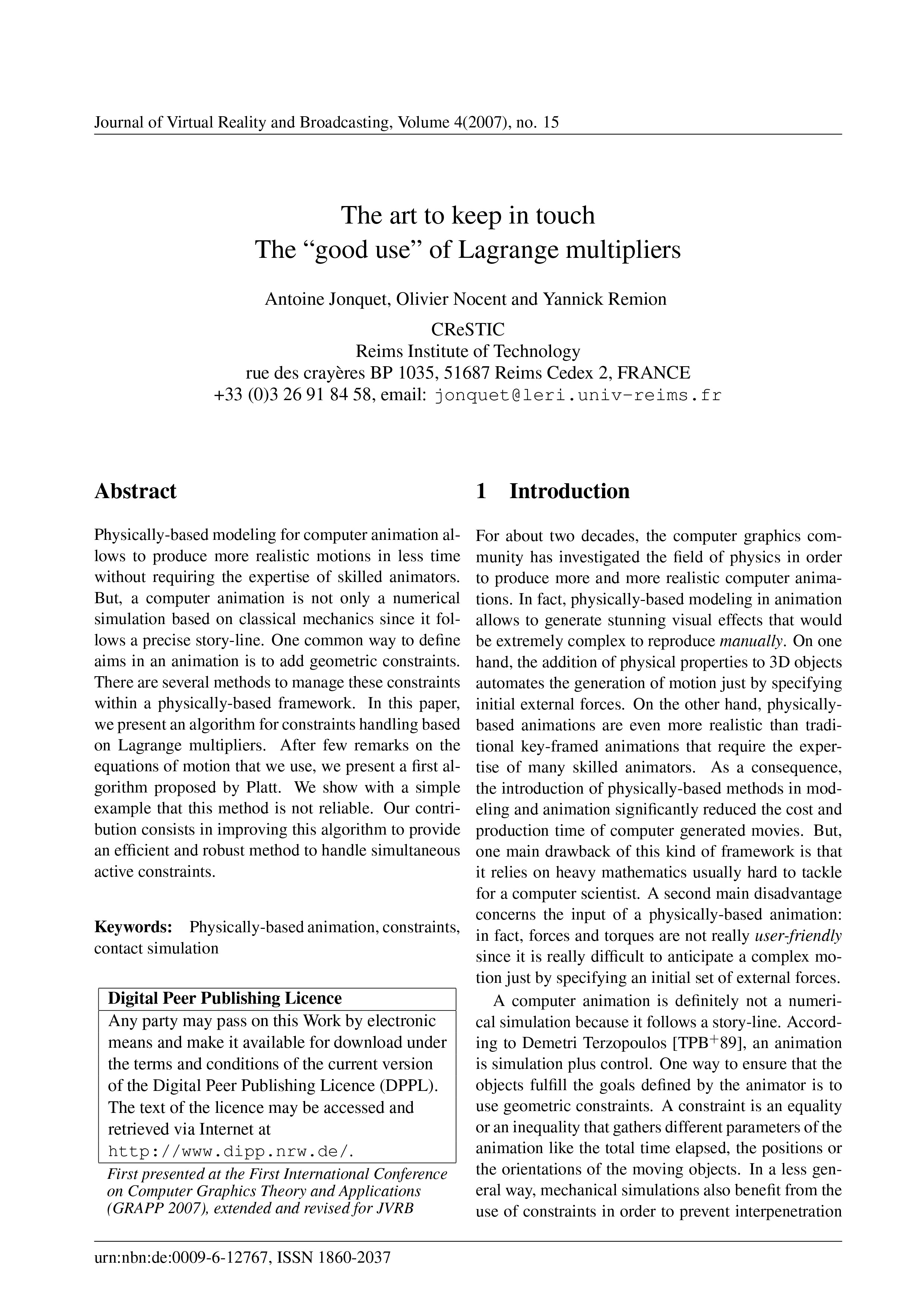The art to keep in touch: The ''good use'' of Lagrange multipliers
DOI:
https://doi.org/10.20385/1860-2037/4.2007.15Keywords:
Contact Simulation, Physically-based animation, constraintsAbstract
Physically-based modeling for computer animation allows to produce more realistic motions in less time without requiring the expertise of skilled animators. But, a computer animation is not only a numerical simulation based on classical mechanics since it follows a precise story-line. One common way to define aims in an animation is to add geometric constraints. There are several methods to manage these constraints within a physically-based framework. In this paper, we present an algorithm for constraints handling based on Lagrange multipliers. After few remarks on the equations of motion that we use, we present a first algorithm proposed by Platt. We show with a simple example that this method is not reliable. Our contribution consists in improving this algorithm to provide an efficient and robust method to handle simultaneous active constraints.
Published
2008-01-24
Issue
Section
GRAPP 2007





